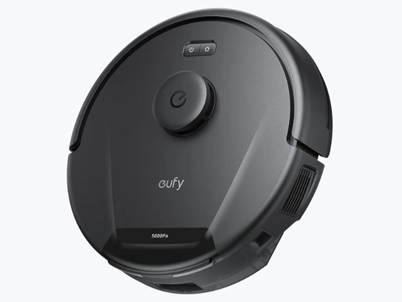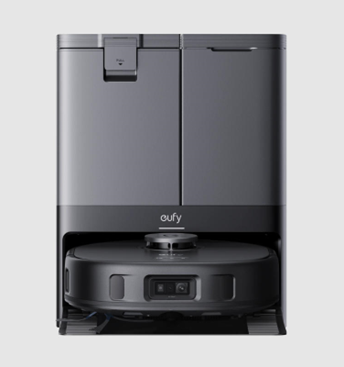Why is My Robot Vacuum Making a Whirring or Whining Noise?
- 649
- 98
Why is My Robot Vacuum Making a Whirring or Whining Noise?
- By huawei-accessories.com
- 10/10/2025
A sudden shift in your robot vacuum’s sound—from a quiet hum to a whine, rattle, or grinding noise—can be both frustrating and worrisome. These sounds often reflect the device’s internal condition and should not be ignored. Identifying their cause is key to preventing further damage and avoiding unnecessary repair costs. In this article, we’ll help you diagnose common noise issues and provide practical solutions to quickly restore your robot vacuum’s quiet and efficient operation.

Common Causes of Whirring and Whining Noises
Brush Roll Issues and Debris Entanglement
The brush roll is one of the most common culprits behind new and unusual whirring noises. Over time, hair, string, carpet fibers, and other debris can tightly wrap around the ends of the roller or become lodged within its bearings. This entanglement places extra strain on the motor that drives the brush, forcing it to work harder and produce a straining, whirring sound. In severe cases, a completely seized brush roll will create a loud, grinding noise as the motor struggles unsuccessfully to turn it. Regularly checking and cleaning the brush roll is essential preventative maintenance that can avoid this common issue and keep the machine running smoothly and quietly.
Motor or Fan Obstructions and Wear
A high-pitched whining noise often points directly to an issue with the vacuum's motor or the fan that generates suction. The motor's bearings can wear out over time, losing their lubrication and resulting in a persistent, grating whine that indicates metal-on-metal friction. Alternatively, a small object like a piece of gravel, a staple, or a large chunk of debris may have been sucked up and become stuck in the fan impeller. As the fan blades strike this obstruction, they create a repetitive clicking or whirring racket. This not only produces noise but can also unbalance the fan, causing vibrations and potentially leading to more serious motor damage if left unaddressed.

Step-by-Step Diagnostic Process
How to Identify the Source of the Noise
Begin your investigation by carefully listening to pinpoint where the sound is coming from; get down on the floor and slowly move your ear around the device while it is operating, if safe to do so. Next, turn the vacuum off and manually inspect it, starting with the most accessible parts like the main brush roll and side brushes, looking for any visible tangles or obstructions. Gently spin the brush roll and wheels by hand; they should move freely and smoothly without any grinding or resistance, which would indicate a problem. If the noise persists even after removing all brushes, the issue is likely internal, possibly related to the motor or a fan obstruction. This process of elimination will help you narrow down the potential causes and focus your troubleshooting efforts effectively.
Checking Moving Parts and Accessibility Areas
A thorough visual and tactile inspection of all moving parts is a crucial diagnostic step. Remove the brush roll completely according to your model's instructions and check its bearings for any play or roughness as you spin it. Look inside the now-empty brush cavity for any small, hard debris like Lego pieces, coins, or hairpins that could be causing an obstruction. Don’t forget to check the side brushes, ensuring they are securely attached and not cracked or warped, which could cause them to scrape against the floor. Finally, inspect all wheels, making sure they spin freely and are not wrapped with threads or hair that could create drag and noise. This comprehensive check covers the most common areas where problems originate.
Quick Fixes and Maintenance Solutions
Many noise issues can be resolved with some simple do-it-yourself maintenance that requires no special tools. The most effective fix is to regularly cut away and remove hair and strings wrapped around the brush roll ends using a seam ripper, scissors, or a dedicated cleaning tool. For objects stuck in the fan or airpath, you might need to carefully use a pair of long-nose pliers to extract them, being extremely cautious not to damage any internal components. Applying a small amount of silicone-based lubricant to the wheel axles and brush roll bearings can also quiet down squeaks and grinding sounds caused by dried-out friction points. Establishing a weekly routine of wiping sensors and checking for blockages can prevent most noise problems from starting in the first place, keeping your appliance running quietly for years.
When to Seek Professional Help
It is important to recognize when a problem is beyond a simple home fix to avoid causing further damage to your appliance. If you have performed all the basic checks and cleans but the persistent whining or grinding noise continues unchanged, the issue is likely internal. A burning smell or visible smoke coming from the unit is an immediate red flag that requires you to power down the device and seek professional assistance, as this indicates a serious electrical or motor fault. Similarly, if the vacuum has sucked up a significant amount of water or other liquid, it can damage the motor and internal electronics, necessitating expert repair. For devices still under warranty, always contact the manufacturer before attempting any disassembly yourself, as doing so will often void the warranty coverage.
Conclusion
A noisy robot vacuum typically indicates a need for basic maintenance or repair. By understanding common causes like brush roll tangles or motor issues, you can often resolve problems yourself through simple cleaning and inspection. However, seek professional help for persistent noises, burning smells, or liquid damage to avoid further complications. If you're tired of constant noise from an older model and seek reliable quiet operation, the quietest robot vacuum options like eufy's models offer powerful cleaning without disruptive noise, ensuring a peaceful home environment that will satisfy your needs. With proper care and timely intervention, you can restore and maintain your vacuum's quiet performance.





![[VLOG interlocking report] Try the combination of Manfrotto's Nitro Tech 608 and iFootage's TC6 [VLOG interlocking report] Try the combination of Manfrotto's Nitro Tech 608 and iFootage's TC6](https://website-google-hk.oss-cn-hongkong.aliyuncs.com/drawing/article_results_9/2022/3/25/278166fcc7181b73dd99af1b87fd6482_0.jpeg)









